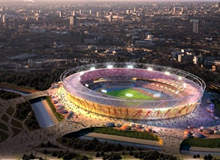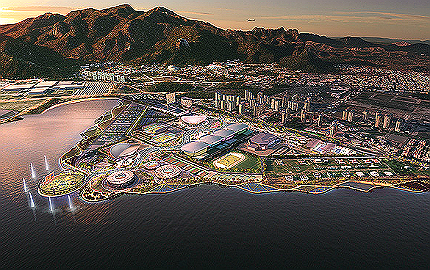
With the Olympic Games broadcast to millions across the globe, the sporting venues and stadia in which they’re hosted have become almost as popular as the events themselves. Plans for the London 2012 Olympic Village became poured over as soon as they were announced, and Beijing’s "bird’s nest" captivated many with its manic-appearing roof structure.
With Brazil preparing to host both the 2016 Olympic Games, and with London 2012 just weeks away from the starting pistol, public attention once again focuses on the latest round of emerging sporting stadia.
Beijing National Stadium – setting the Olympic standard
The 91,000-seat Beijing National Stadium, famously referred to as the "bird’s nest" due to it’s roof of twisting steel sections, was the centrepiece of China’s bid to host the 2008 Olympic Games. Hosting the opening and closing ceremonies as well as athletic track and field events, the stadium was built at a cost of £300m.
The notable saddle-shaped elliptic structure which forms the roof weighs in at 42,000t and has been constructed to be separate from the actual bowl of the stadium in order to ensure the stadium remains earthquake-proof.
Read the full Beijing National Stadium project.
London 2012 Olympic Park Master Plan
Located in the Stratford area of East London, the 2012 Olympic Village will comprise various venues, accommodation and facilities for competing athletes, power substation and a broadcast centre. Heralded as a "major catalyst" for the regeneration of East London, the site’s key legacy will be the creation of a number of homes in the athlete’s accommodation once the Olympics has finished.
Venues situated inside the Olympic Village include the £303m Aquatics centre, £80m Velodrome, and indoor arenas for volleyball, handball and basketball, two of which are temporary. The site will also benefit from its own DLR station, connecting it to London’s Underground network.
Read the full London 2012 Olympic Park master plan project.
London 2012 Olympic Stadium
London’s Olympic Stadium was designed by the consortium Team McAlpine, consosting of construction firm Sir Robert McAlpine, architecture firm Populus, services engineer Buro Happold and consulting firm M-E Engineers. The Olympic Delivery Authority earmarked £496m for its construction, which commenced in May 2008.
With a key feature of London’s Olympic strategy being the legacy of its stadia, 55,000 of the stadium’s 80,000 seats will be dismantled after the games, with the venue set to be used to host other sporting events. The precise future of the stadium is still to be decided however, with English Premier League club West Ham United still amongst the vaunted tenants.
Read the full London Olympic Stadium project.
London 2012 Aquatic Centre
London’s Aquatic Centre, designed by Prtizker Prize-winning architect Zaha Hadid, has seen a dramatic increase in costs since its original inception. Although originally estimated to cost approximately £75m, the desire for the venue to leave a lasting legacy after the Games has seen that cost rise to £242m.
The roof, weighing 2,800t and spanning 11,000 square metres, has been designed to resemble a manta ray and continue the landscape of the Lower Lea Valley in which it is situated. Two temporary stands have been attached to either side of the arena in order to accommodate an extra 15,000 spectators for the duration of the Games, with those stands scheduled to be removed after its completion.
Read the full London Olympics Aquatic Centre project.
Rio 2016 Olympic Park Master Plan
Located south-west of Brazil’s capital Rio de Janeiro, the Rio 2016 Olympic Park will host 15 sporting events of the 2016 Olympic Games. With Brazil also hosting the 2014 FIFA World Cup, some 12,265 infrastructure projects are expected to run throughout the country.
Although sporting venues are the central focus, Rio’s master plan has placed greater emphasis on commercial, residential and leisure developments for use both during the Games and afterwards, with secondary and tertiary phases designed to maintain the social, environmental sustainability and economic feasibility of the area long after the Games have finished.
Read the full Rio 2016 Olympic Park Master Plan project.








